This is the first in a series of three articles on the Bucciali, which will include this brief history by Wallace Wyss and the VeloceToday staff. Next week Wyss writes of the American effort to create a Bucciali cover car, and the third part, by the Editor, will address the Dutch Bucciali ‘inspiration’ as envisioned by an amazing artist by the name of Bart de Vries, who generously gave us an exclusive interview. [Ed.]
By Wallace Wyss
In the Beginning there was Bucciali
The main impetus behind the Bucciali marque was Albert ‘Buc’ Bucciali, born in the city of Arras on the France in 1889, and was the second son to the musician and organ builder, Joseph Bucciali, who, most remarkably, was blind from childhood. Both Albert and his brother Angelo learned their father’s craft, and became talented craftsman as well as musicians. In an interview with Griff Borgeson, Albert Bucciali noted that organ building is “a remarkable school for learning the principles of physics and mechanics.”
He saw his first car race in 1902 and immediately wanted to become a car racer and builder. By 1911, he started on his first mechanical project, not letting the lack of formal education in engineering deter him. He liked cars and airplanes equally but was even more in love with airplanes and learned to fly even before the onset of WWI.
During the war, he was assigned to the 26th squadron which has a stork with swept-back wings as its insignia; Bucciali was an “ace” flyer, according to historians. He was sent to the Eastern front, where he met a Czech mechanic, Némorin Causan, who later figured into his car making venture.
Post-war, Bucciali (aka Albert, Paul Albert, or Albert Paul) set up a car factory in a town called Courbevoie and one of the first people he hired was Causan, the mechanic he’d met during the war. They began modifying cars for other owners, but then he and his brother Angelo built the first car called “Buc,” using a shortened version of their last name. The engine in that first Buc was a supercharged Violet two-stroke V4. The car made its debut in the 1922 Paris show and orders were taken. Dennis Adler, the historian, says roughly 100 Bucs were made and sold between 1925 and 1937 though they seemed to have disappeared without a trace.
They kept racing to get publicity and Buc cars with a SOHC 1459 cc six designed by Causan competed in the Tour de France winning some success. Some say the Buc B6-C24 racing car, powered by their own six cylinder was a very good car. But at that point they held off building cars temporarily to ask ‘where is our niche?’ Conventional cars were, well, too conventional. Albert had so many ideas; he could see the wisdom of just being an engineering firm, selling his ideas to automakers.
Bucciali and front wheel drive
Let the others do the building, he figured. So they started off in that direction, developing a front wheel drive system. Mind you, Miller, Tracta and others were already in the field with front wheel drive cars, so Bucciali was attempting to patent improvements to the front wheel drive concept.
The name of the business was changed to ‘Bucciali Freres’ (Bucciali brothers) and the new front wheel drive chassis they were developing was named the Bucciali TAV, for *Traction Avant. It made its debut as the Bucciali TAV 1 at the 1926 Paris Motorshow.
Albert Bucciali was careful to patent his front wheel drive system in 1927. They also began work on a transverse gearbox. In 1928 these systems were on display on the stand together and though plenty of people stopped by the booth, no orders came in.
And perhaps they thought, “It’s still too ordinary; we need something that’s the ultimate.” So they ordered a straight eight Continental engine from the United States for the new car. The 1929 show saw the TAV show car, the completed example and a rolling chassis all on display.
The Peerless connection
Following the show, a chassis was sent to the French coachbuilder Labourdette (according to Christian Huet, this was NOT the famous coachbuilder Henri Labourdette but another man with the same name) for more stylish coachwork. With the completed car the Bucciali Brothers were able to sell the American rights to their front drive system to a U.S. citizen, Coldwell S. Johnston. In early January of 1930, with the two brothers in tow along with a demonstrator, Johnston began a PR effort from a room at the Park Central Hotel in New York. He sent out letters to U.S. auto manufacturers inviting them to look at the car and stated that “the writer has driven to Washington [D.C.] and submitted the car to the Bureau of Standards…”
In late 1930 Johnston again went to America with a prototype with a Continental engine and a mechanical display of the Bucciali front wheel drive concept, again met automakers, but didn’t get a single order for a car. But a smaller automaker, Peerless, (who also often used Continental engines) signed an agreement to manufacture cars using their patents and reportedly took one of the Bucciali cars. The brothers were also given the exclusive rights to distribute a future front-wheel drive Peerless model in Europe. There may have been more cooperation between Peerless and Bucciali. The last Peerless, a special all aluminum chassis and bodied car featured a V16 and Bucciali patented aluminum wheels.
When the brothers got back to France, perhaps inspired by the Peerless, they began upgrading the two running cars and also embarked on one with a fabulous luxury car engine – a V16 of their own design – created by combining two Continental straight eight blocks at an angle using a single crankshaft. It was called the “Double Huit” or double eight.
By 1930 at the Paris Motor show, things were looking up. They had a new backer and took their first front-wheel drive Bucciali order from a private customer, a man named Georges Roure. But there was a little hitch. They had displayed the car with a mock-up of the V-16 but were unable to deliver the car with that engine so they mollified him by saying they would install a Continental straight eight instead.
The brothers had to get a new backer after Albert’s wife had put the kibosh on more spending of their own money. The new investor/partner was Emile Guillet, who owned a coachbuilding firm. The new car had a distinctive trademark, the stork that was his unit’s insignia when Albert was a pilot.
‘Fleche d’Oro’
Back in France they began building the car they had promised that first customer with the name TAV 8-32; that change in designation to show it had an eight. But then Roure decided he wanted a Voisin V12 instead of the American eight-cylinder.
As the year 1931 came, the company was in trouble. The depression had started and there was friction inside the company. Peerless, their American partner, switched from making cars brewing beer (by buying the Carling brand).
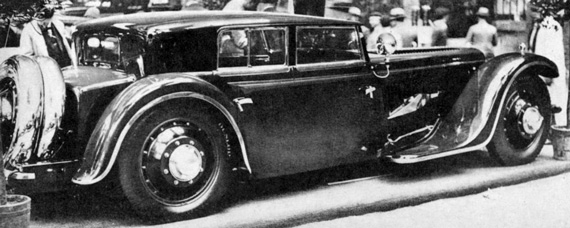
Perhaps the best photo of the last Bucciali at Paris in 1932. It was later found in pieces by collector Ray Jones.
The Bucciali brothers steamed onward. One chassis got the most glamorous body, a cabriolet from Saoutchik and another went to Guillet for a new limousine body. But the Guillet body looked like hell. Reportedly, their one and only customer, Roure, volunteered to pay more if they would throw that body away in favor of a design by Saoutchik creation similar to an earlier Saoutchik design. A new car was made, and memorialized by the name ‘Fleche d’Oro’ or “Golden Arrow.” The car was completed in April, 1932 and delivered but too late; their sponsor unfortunately was running dry, and no automaker was willing to buy their patents and the Bucciali Brothers shut their doors in 1932.
What happened to that one completed car? It was sold to Count de Rivaud, a Paris banker who liked the body so much he moved the Saoutchik design to his new Bugatti Type 46, where it didn’t quite fit as well, the original chassis having been front drive. But there were Bucciali fans and in the 1970s enough parts were found of the TAV 8-32 including the very rare Voisin engine, the bodywork and the drivetrain so that with a new chassis, front bulkhead and rear axle the ‘Fleche d’Oro’ could live once again. The car was offered by Christie’s in a Pebble Beach auction in 1997. But with the word “reconstruction” attached, it failed to sell. Christies later took it to their booth at Retromobile in Paris where a Swiss took a liking to it and bought it.
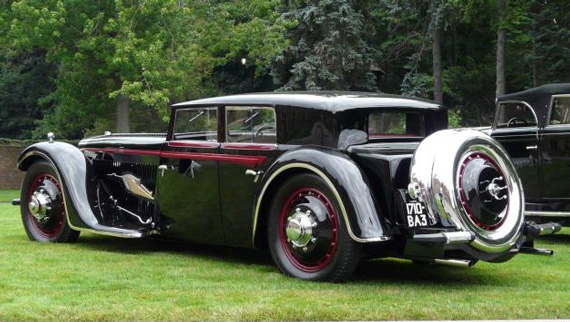
With exaggerated features, the Fleche d'Oro must have inspired cartoonists of the 1930s. Photo courtesy Jalopnik.com
It was displayed in the 2006 Pebble Beach Concours d’Elegance, but not entered for judging where it might have been savaged as a replica. Dennis Adler, the historian, wrote in Car Collector magazine in October 1994 that William Harrah had bought the V-16 chassis in the 1960s only to find on delivery that the engine was a mockup with no internal parts!
Adler and others also made the assertion that the brothers never had any intention of building 16-cylinder cars, that they were just showing a mock-up engine to attract attention from automakers for their design patents.
Bucciali may have been on the ropes, but great designs never die. All it takes is time, money and passion to keep the faith alive.
Next week, Bucciali Passion, American Style.
*Note that the types, numbers, and disposition of the Buccialis are at times unclear and it is not our intention here to provide a detailed history of Bucciali models or sort the various and often inaccurate TAV model numbers. Best source short of Christian Huet’s book might be this German Wiki site: http://de.wikipedia.org/wiki/Bucciali for a complete rundown on the TAV designations.
Sources:
Automobile Quarterly, V11-1
Road & Track, October 1964
Car Collector magazine
Internet sites
Museum of American Speed
Christian Huet’s Bucciali book can be found for sale here:
LesLibraries

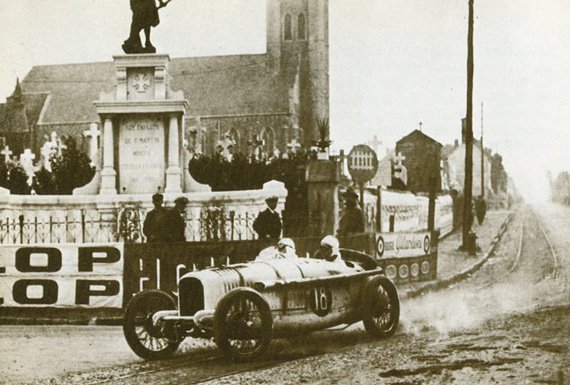
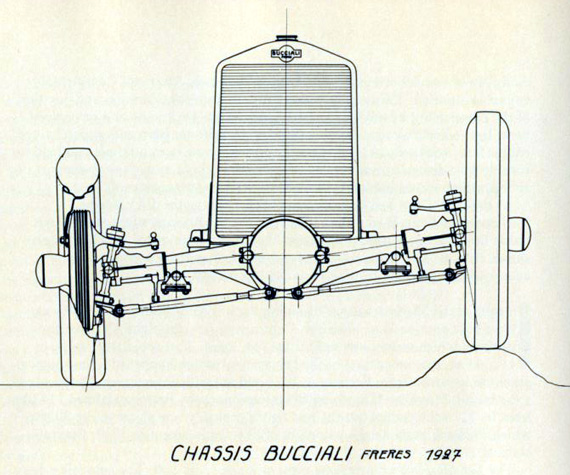
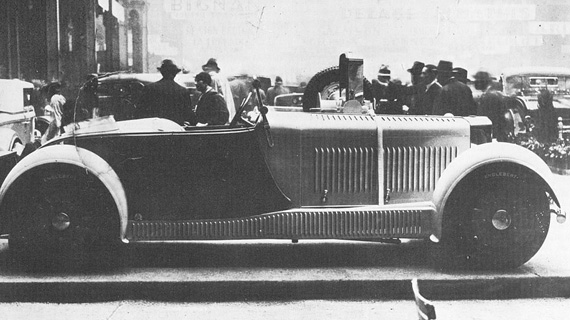
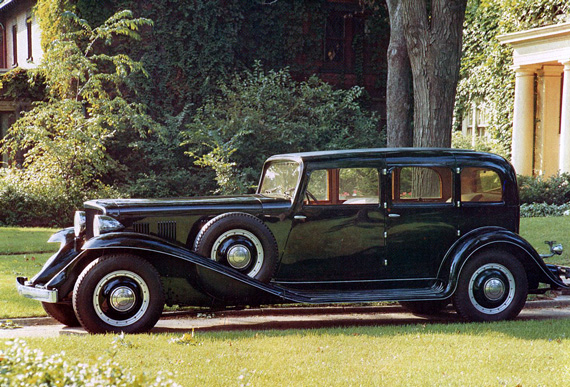
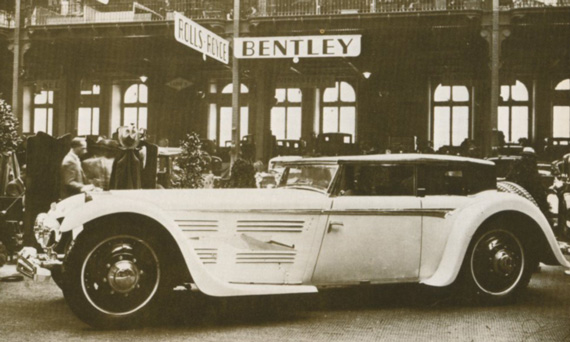
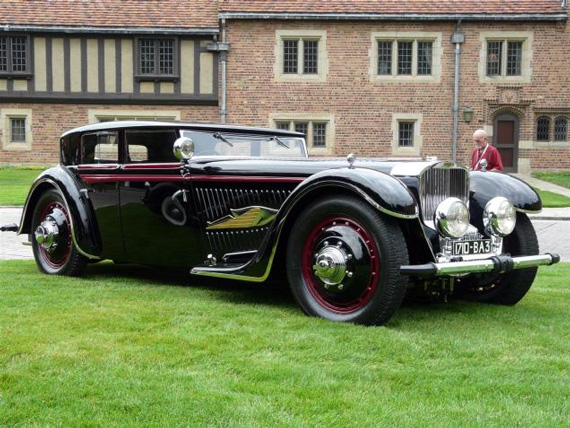
In my mind’s eye I keep seeing this car, or something like it, winning a major award at a hotrod show. I’ve always loved it. It also reminds me of that great series of imaginary cars designed for the signs of the zodiac in an old AQ.
Outstanding story on spectatular machine.
Notice the reference to ROAD & TRACK
of October 1964, as follow up, a letter to editor
in January 65 issue has details and photo of the
Paris agency. for those who want more coverage
my good friend Bob Cumberford also wrote at length
of Bucciali back in May 1959 issue of SPORTS CAR
QUARTERLY. Thanks you for such fine photos and
details,
Jim sitz
Oregon